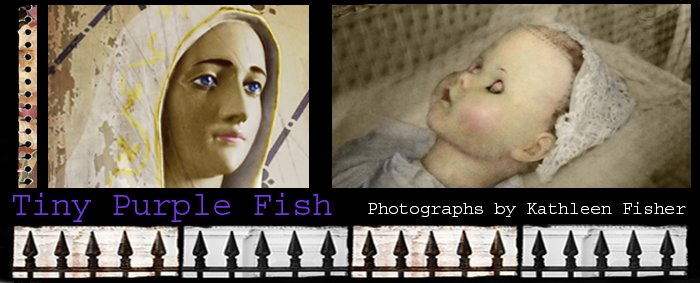


 True to my all-or-nothing form, I leapt into the abyss of digital photography two years ago, learning how to scan negatives and use Photoshop just one week before an exhibition deadline.
True to my all-or-nothing form, I leapt into the abyss of digital photography two years ago, learning how to scan negatives and use Photoshop just one week before an exhibition deadline. Not that I didn't have a good reason — any photographer with a cat knows what a single long, fluffy hair does when it lodges against a camera's film plane ... I needed a crash lesson in using the Healing Brush Tool!
These four images were the result of that first digital experience. While I fuss about their punchiness now, but I was thrilled at the time, not just with my newfound skills, but also with the effort it took to get the shots in the first place — first, I created them in-camera by running the film through twice over a cardboard mask and, second, I waded waist-deep into a sludge-filled lake, holding onto my precious Truview (Diana-clone) for dear life.
You'll be pleased to know I met my deadline with just half an hour to spare. The pictures were part of Wildside?, a group show at Photoaccess in 2006 that explored the future of the rolling hills around Canberra. Here's my artist statement:
Bulldozers, dust and new houses — living not far from Harrison and Wells Station, Canberra’s newest northern suburbs, I see our city swelling every day. I’m struck most by the process of development: first, the open paddocks we call “nature parks” are scraped clean, with trees plucked and hills flattened; then they’re rebuilt, with new trees planted and new hills shaped to fit block sizes and road layouts. New homes seem to appear overnight, along with “for sale” signs inviting “country living in the city” — ironic as everything remotely country has been transformed into suburbia.
Looking at Gunghalin in general, I’m intrigued by the number of public sculptures of native animals — including pelicans, ibis, kangaroos, koalas and platypus. It’s as if replacing living, breathing animals with concrete replicas is another essential part of the development of Canberra’s open spaces.
My images, shot in-camera using a mask of cardboard and electrical tape, highlight the artifice of development by contrasting its signs and tools with these sculptures. At the same time, they highlight the notion of home — as homes are built for one species, they are taken away from others.
Not that I see myself living outside suburban development — in fact, I explored a home loan the same week I shot these images.

2 comments:
I'm sorry I wasn't around to see the Wildside? show.
I love the way you've paired up the images. How did you come up with the idea of running the film through twice over a cardboard mask? The photos look fantastic.
Thanks. I read about this technique on the web a few years ago. It takes a bit of effort, but it's so much fun.
Post a Comment